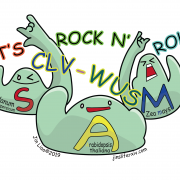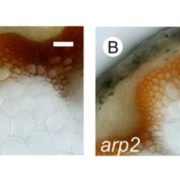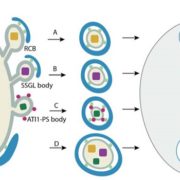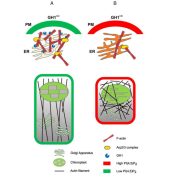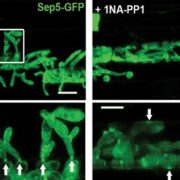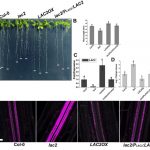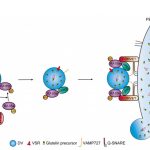Death in cells overlying lateral root primordia facilitates organ growth in Arabidopsis (Curr. Biol.)
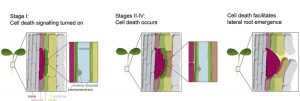 While cell division and cell expansion are known to be determinants of plant organ growth, little is known about the role of cell elimination and death in this process. Cell death indicators such as cell death- and autolysis-associated cysteine proteases have been observed in cells overlying the site of lateral root formation in many plant species, suggesting the involvement of cell death during lateral root emergence. Lateral roots are initiated from pericycle cells that are internal tissues. To emerge, the developing lateral root primordium must pass through the endodermal and cortical cells. It is believed that cell death does not occur during lateral root emergence in Arabidopsis, but rather the overlying cells separate to allow passage. Escamez et al. used a time course gene expression experiment and detected the upregulation of several cell death marker genes in a subset of lateral root primordium overlying cells. Cell-death-detection methods like tonoplast integrity marker, detection of autophagy marker and a viability marker which can distinguish between dead and living cells subsequently confirmed that cell death occurs in a subset of lateral root primordium overlying cells. Perturbation of a central transcriptional regulator of cell death, a NAC transcription factor ORE1 led to a decrease in cell death of lateral root primordium overlying cells and ultimately a delay in lateral root emergence. Interestingly, when cell death was restored by the expression of a mammalian cell death promoting factor or laser ablation, lateral root growth was restored to normal. (Summary by Toluwase Olukayode) Curr. Biol. 10.1016/j.cub.2019.11.078
While cell division and cell expansion are known to be determinants of plant organ growth, little is known about the role of cell elimination and death in this process. Cell death indicators such as cell death- and autolysis-associated cysteine proteases have been observed in cells overlying the site of lateral root formation in many plant species, suggesting the involvement of cell death during lateral root emergence. Lateral roots are initiated from pericycle cells that are internal tissues. To emerge, the developing lateral root primordium must pass through the endodermal and cortical cells. It is believed that cell death does not occur during lateral root emergence in Arabidopsis, but rather the overlying cells separate to allow passage. Escamez et al. used a time course gene expression experiment and detected the upregulation of several cell death marker genes in a subset of lateral root primordium overlying cells. Cell-death-detection methods like tonoplast integrity marker, detection of autophagy marker and a viability marker which can distinguish between dead and living cells subsequently confirmed that cell death occurs in a subset of lateral root primordium overlying cells. Perturbation of a central transcriptional regulator of cell death, a NAC transcription factor ORE1 led to a decrease in cell death of lateral root primordium overlying cells and ultimately a delay in lateral root emergence. Interestingly, when cell death was restored by the expression of a mammalian cell death promoting factor or laser ablation, lateral root growth was restored to normal. (Summary by Toluwase Olukayode) Curr. Biol. 10.1016/j.cub.2019.11.078



